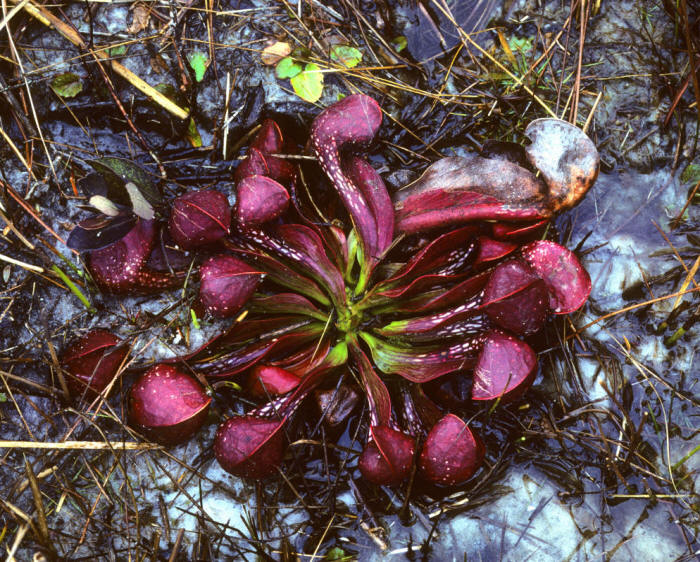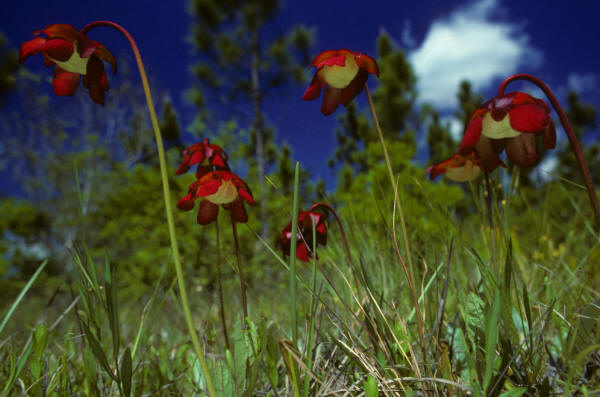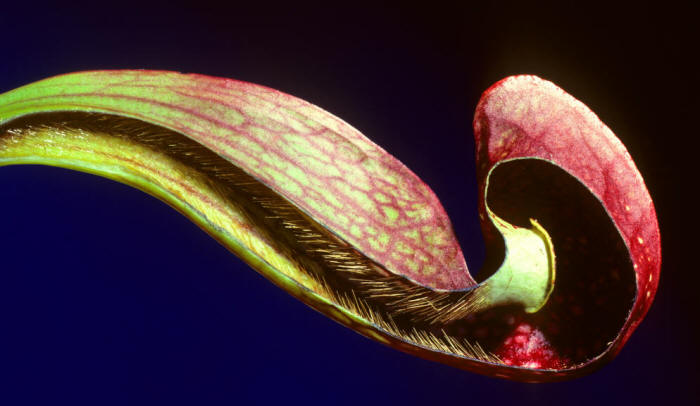|
Carnivorous Plants Story
|
||
|
|
I Sarracenia psittacina The pitcher leaves are typically decumbent in this species, lying flat on the ground, though in a wet condition the leaves tend to rise to 45 degrees. The pitcher in this species has a well developed hood, forming a globose dome structure at the leaf tip. A large, undulating ala and the pointed tip of the hood gives the appearance of the beak, explaining the common name, parrot pitcher plant. a lobster pot entrance bottom, inside numerous light windows. As devilish as it may sound, areoles are strategically positioned to persuade the prey already in the dome interior to move forward deeper into the pitcher tube. Lobster pot structure prevents the prey from retreat its steps... only forward due to intermeshing directional hairs. Somewhat difficult to spot in the field -- it is low on the ground and deep in grass.... Flowering occurs in April to May. Flower scape reaches 40 cm tall and a deep red petals surround a green to pale yellow umbrella-shaped pistil. This species retains pitchers well during the winter months. and well preserved pitchers can be seen along with the flower. However, because of the low-lying posture of the pitcher leaves, there appears to be no conflict between pollinator and prey. The plants prefer a wetter habitat compared with other pitcher plant species. When the soil is flooded after a rain, the plants are known to capture aquatic preys such as tadpods in the wild. Looking at the well conceived leaf structure, it is easy to see they are well equipped for aquatic feat. Designed to capture crawling or aquatic prey instead of relying on the gravity-feed, as in other erect pitcher plant species. .
The plants grow along the Gulf Coast and into the southern part of Georgia (Okifenikee) where uusually large, giant form of the plants can be found (growing up to 40 cm leaf).
Note the intermeshing hairs all the way to
the beginning of tube. This is not a pitfall by gravity. ... Lobster trap
Introduction Venus Flytrap Sundews Pitcher Plants Cobra Plant Butterworts Bladderworts
|
|


